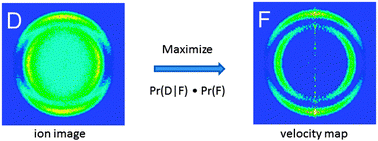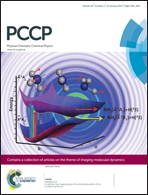Inverting ion images without Abel inversion: maximum entropy reconstruction of velocity maps
Abstract
A new method for the reconstruction of velocity maps from ion images is presented, which is based on the maximum entropy concept. In contrast to other methods used for Abel inversion the new method never applies an inversion or smoothing to the data. Instead, it iteratively finds the map which is the most likely cause for the observed data, using the correct likelihood criterion for data sampled from a Poissonian distribution. The entropy criterion minimizes the information content in this map, which hence contains no information for which there is no evidence in the data. Two implementations are proposed, and their performance is demonstrated with simulated and experimental data: Maximum Entropy Velocity Image Reconstruction (MEVIR) obtains a two-dimensional slice through the velocity distribution and can be compared directly to Abel inversion. Maximum Entropy Velocity Legendre Reconstruction (MEVELER) finds one-dimensional distribution functions Ql(v) in an expansion of the velocity distribution in Legendre polynomials  l(cos θ) for the angular dependence. Both MEVIR and MEVELER can be used for the analysis of ion images with intensities as low as 0.01 counts per pixel, with MEVELER performing significantly better than MEVIR for images with low intensity. Both methods perform better than pBASEX, in particular for images with less than one average count per pixel.
l(cos θ) for the angular dependence. Both MEVIR and MEVELER can be used for the analysis of ion images with intensities as low as 0.01 counts per pixel, with MEVELER performing significantly better than MEVIR for images with low intensity. Both methods perform better than pBASEX, in particular for images with less than one average count per pixel.

- This article is part of the themed collection: Imaging molecular dynamics

 Please wait while we load your content...
Please wait while we load your content...